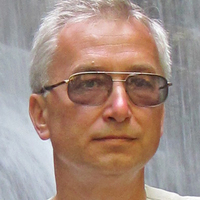
P. Sujatha
Related Authors
Esteban Ferrer
Universidad Politécnica de Madrid
Sophie Clayton
University of Washington
Rafael Abargues
Universitat de València
Ron Warzoha
US Naval Academy
Nishanth T
Kannur University
Sergey Konovalov
Russian Academy of Sciences 1
Harijono Djojodihardjo
Institut Teknologi Bandung
Sravankumar Kota
Institute Of Aeronautical Engineering
Jesús Miguel J M Santamaria
University of Navarra
Gareth McKinley
Massachusetts Institute of Technology (MIT)









Uploads
Papers by P. Sujatha
Instrument (OMI) and the Aura/Microwave Limb Sounder (MLS) over the Indian
sub-continent region using a tropospheric ozone residual (TOR) technique. The TO
was initially retrieved at a horizontal spatial resolution following that of the Aura/
MLS (300 km), which has a lower horizontal spatial resolution than that of the Aura/
OMI (25 km). To overcome the limitations imposed by data at a lower spatial
resolution, we have introduced a 2D rectangular interpolation (RI) algorithm for
effective resampling of data to higher horizontal spatial resolutions. The performance
of this algorithm has been evaluated by comparison against existing standard techniques such as nearest neighbourhood (NN) and kriging interpolation as well as
comparison against in situ ozonesonde observations. Gridded TO estimates were
subsequently generated for the region of interest at 25, 50, and 100 km horizontal
spatial resolutions for further study.
Instrument (OMI) and the Aura/Microwave Limb Sounder (MLS) over the Indian
sub-continent region using a tropospheric ozone residual (TOR) technique. The TO
was initially retrieved at a horizontal spatial resolution following that of the Aura/
MLS (300 km), which has a lower horizontal spatial resolution than that of the Aura/
OMI (25 km). To overcome the limitations imposed by data at a lower spatial
resolution, we have introduced a 2D rectangular interpolation (RI) algorithm for
effective resampling of data to higher horizontal spatial resolutions. The performance
of this algorithm has been evaluated by comparison against existing standard techniques such as nearest neighbourhood (NN) and kriging interpolation as well as
comparison against in situ ozonesonde observations. Gridded TO estimates were
subsequently generated for the region of interest at 25, 50, and 100 km horizontal
spatial resolutions for further study.